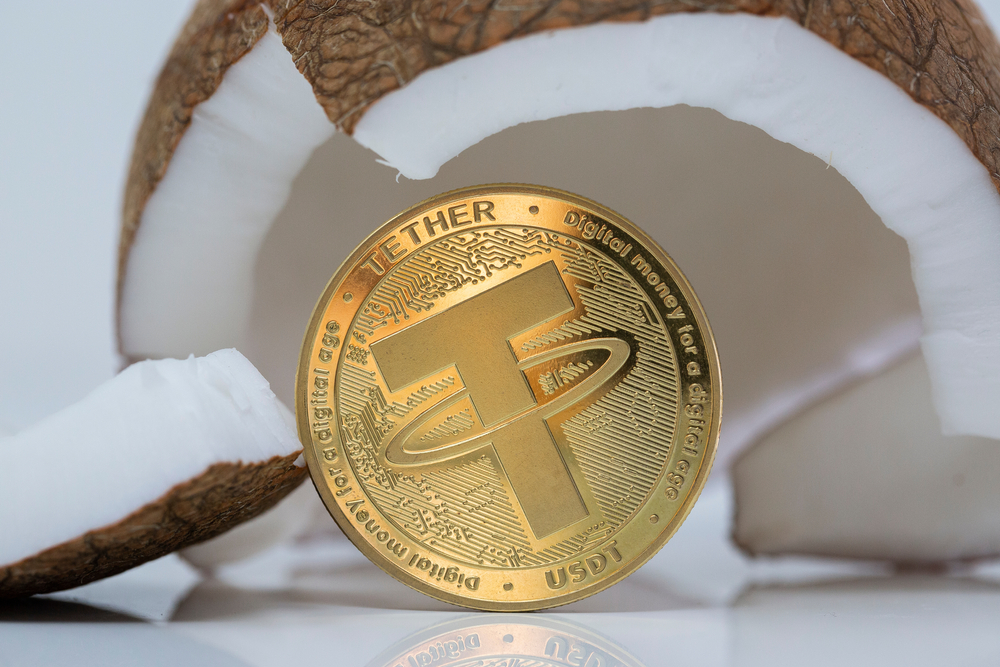Introduction
Blockchain is considered one of the most important and innovative technologies of the 21st Century. Cryptocurrencies are the most important product and service created by blockchains. At present, there are more than 24,000 cryptocurrencies.
However, there are also some useful types of cryptocurrencies that investors can use to diversify their portfolios and avail specialized functions. In this article, the reader is going to learn about a special stablecoin project called USDT and its basic components.
What is a Stablecoin?
Before talking about USDT, it is necessary to understand the definition of a stablecoin. The reader must know that there are several classifications of cryptocurrencies such as NFTs, CBDCs, Governance tokens, Yield Tokens, and Utility tokens, etc.
Stablecoins are also a special type of cryptocurrency that maintain a constant or stable value at all times. The goal of a stablecoin is to ensure that the price of that cryptocurrency remains fixed throughout its circulation.
Just like one fiat currency unit such as $1 has a fixed value in the TradeFi space, in the same manner, the prices of a stablecoin are also constantly equal to a unit currency such as fiat or other options.
How do Stablecoins Work?
For the most part, cryptocurrencies are used as an investment option meaning that their value keeps increasing or decreasing in the main market. When it comes to fiat currencies the Central Bank and other financial regulators assign or decide their value.
However, for stablecoins, it is necessary to have a financial mechanism that can back the project. Stablecoins can use different types of supply mechanisms and they are pegged to another asset class.
The value of the stablecoin is measured based on the commodities or fiat currencies that they are pegged to. The total amount of the stablecoin project aims to remain equal to the asset reserves it is backed by.
In case the price of the asset that a stablecoin has been pegged to drops, the blockchain burns the stablecoins to match the decline of the value. On the other hand, when the value of the pegged reserve asset class increases in the market the blockchain issues more stablecoins to balance out the new increase in the backup reserves.
There are many stablecoin projects in the cryptocurrency market and every blockchain adopts a unique method to ensure that it can back its stablecoin and keep the unit value of each stablecoin constant at all times.
Types of Stablecoins
Here are some major types of stablecoins:
Fiat-Collateralized
Fiat-Collateralized stablecoins are projects that are backed by a specified fiat currency such as USD, Euro, GBP, or Yen, etc. Some of the most popular stablecoins in this category are USDT, USDC, BUSD, EUROS, etc.
Commodity-Collateralized
Commodity-Collateralized stablecoins are the ones that are backed by commodities such as gold, silver, corn, oil, etc. Some examples in this category are PAXG and XAUt.
Crypto-Collateralized
Crypto-backed stablecoins are backed by cryptocurrencies. DAI stablecoin is backed by fiat currency but also by Ethereum token reserves making it a partially crypto-collateralized stablecoin.
Algorithmic Stablecoin
Algorithmic Stablecoins are blockchain products that depend on an automatic DeFi algorithm to maintain their constant value. The algorithm of these stablecoins keeps track of the total value of the collateral reserves in the market and adds or removes stablecoins to match that value at all times by increasing or decreasing the total supply.
What is USDT?
USDT is among the most popular stablecoin projects in DeFi. It has been pegged to the US dollar. USDT is also called Tether and it is listed on all major cryptocurrency exchanges and DEX platforms.
Some of the biggest blockchains such as Ethereum, Tron, EOS, Algorand, Omni, and Liquid have issued Tether as a secondary token. It is not backed by USD alone but by a host of other fiat currencies such as CAD, AUD, and YEN. Tether has introduced cryptocurrency investors with an intermediary between TradeFi and DeFi marketplaces.
Cryptocurrency investors who are unable to convert their entire cryptocurrency portfolio into cash can switch to changing the stablecoin options available on the crypto trading platforms.
It is important to note that one unit of USDT is pegged to a single dollar maintaining a 1:1 ratio at all times. Tether Ltd. that issues this stablecoin is not liable to exchange USDT holdings of their users into fiat currencies or USD.
How does USDT Work?
USDT is a fiat-collateralized stablecoin which means that its total value at all times is pegged to the total value of the fiat currencies. The issuer of this stablecoin maintains a sizeable reserve of the said fiat currencies in its reserves.
As the prices of the fiat currencies backing the USDT token increase or declines the issuer also mints new token or send them to burn addresses accordingly.
To ensure that the issuer of the Tether stablecoin has sufficient reserves in their possession as much as the stablecoin they have issued it uses Proof of Reserve.
Proof of Reserve is a transparency mechanism that allows the blockchain devs to create an authentication of the total liquidity available in any DeFi project. The benefit of this protocol is that it allows all the stakeholders to verify the total reserves or other statistics claimed by the given project.
In this manner, the users of the stablecoin can ensure that they have proof of total reserves available on the project and confirm or calculate the real value of their stablecoins at any time. To learn about the total supply of the Tether stablecoin, the users can visit the official website of Tether Ltd.
Origin of Tether
Tether or USDT project was the first to launch on the Bitcoin blockchain using the Omni Layer. However, at present any blockchain that is compatible with the Tether protocol can issue this stablecoin. The total amount of USDT is not capped and it can depend on the value of the fiat currency reserves its issuer possesses.
Brock Pierce, Craig Sellars, and Reeve Collins founded Omni Foundation in 2014 and issued a native currency called Realcoin. Realcoin later morphed into USDT and also ingrained the ability to create smart contracts and other cryptocurrencies on blockchains.
In November 2014, CEO Reeve Collins renamed the project Tether and assigned it the official symbol of USDT.
After a few months after the debut of Tether, was listed by one of the biggest cryptocurrency exchanges called Bitfinex. The traction on the cryptocurrency exchange ensured that it was able to become more popular among investors. Another reason for increasing interest in Tether happened on account of its association with the banks of Taiwan and Wells Fargo.
However, the bank adoption of USDT was barred by US regulators in 2017 owing to Paradise Papers. The controversy lead to the speculations that Tether did not have sufficient funds in its currency reserves and it was deepened by the temporary suspension of funds.
Tether payables rise to $2.8 billion and led to a lawsuit by New York Attorney General Letitia James in 2019. The lawsuit was settled with Tether and Bitfinex agreeing to pay $ 18.5 million in 2021.
Important Components of USDT
Here are some of the most important and basic components of Tether or USDT:
Omni Protocol
Omni Protocol is one of the layer two solutions available on the Bitcoin blockchain. It is used for creating new smart contracts and issuing new tokens on a blockchain network. In addition to Tether, it has also issued other cryptocurrencies such as MaidSafeCoin.
Omni Layer is the first issuer of Tether coins and it was formerly known as MasterCoin. Therefore, it is impossible to imagine the creation of Tether without the Omni Protocol.
Tether Ltd.
Tether Limited is under the ownership of a Hong-Kong-based company called iFinex Inc. The same enterprise also operates the Bitfinex cryptocurrency exchange the firm that listed the Tether coin first.
The official website of Tether defines itself as Tether Holdings Limited which is a blockchain company founded in 2014. It is registered in the British Virgin Islands and its currently appointed CEO is JL van der Velde.
Proof of Reserve
It has been mentioned that Tether is issued by many blockchains. The users of the Tether need a singular source where they can verify the total supply and the available reserves of the Tether stablecoins. Therefore, Tether Limited has introduced the Proof of Reserves protocol that calculates the total value of the USDT backing reserves and its total circulatory supply which is updated regularly on its official website.
Transport Protocols
The reason that any blockchain project can issue the Tether coin now is on account of Transport Protocols. The Transport protocols are open-sourced software that can communicate from one blockchain to another.
Therefore, the main Tether operator can keep track of the total circulatory supply and the backup reserve value. Due to the transport protocols, Tether is now issued by major blockchains such as Ethereum, NEAR, Kusama, Polkadot, Algorand, Tron, EOS, Solana, Tezos, Avalanche, and BCH.
Tether Protocol
Tether was created as a layer-2 DeFi protocol according to a White Paper published in 2012 by J.R.Willett. It is not a standalone blockchain but rather a DeFi protocol that exists on a genesis blockchain host such as Ethereum and Algorand etc. Furthermore, it is a stablecoin project that is pegged to the fiat currencies such as USD at a 1:1 ratio.
Tether Reserves
Tether Ltd. claims that every USDT is backed 100% by fiat currency reserves. Usually, USDT is thought to be backed by USD with a 1:1 ratio. However, Tether reserves are also diversified using traditional currencies and cash equivalents.
Tether reserves can also include other assets, and loan receivables that Tether has lent to third parties. Tether also issues financial statements on its official website regularly to declare its collateral reserves. The report for 2022 was composed by a third-party accounting firm called BDO.
FAQs about Tether
Here are some of the Frequently Asked Questions about USDT that can help investors:
Is Tether an Alternative to Bitcoin?
Tether was introduced as the first-ever altcoin or alternative to Bitcoin. However, in its first form named RealCoin, the project did not amass a lot of attention. Later, it transitioned into a stablecoin and got listed on a new crypto exchange and thus introducing new utilities for crypto investors.
The trading volume of Tether has been recorded to remain consistently and significantly higher than Bitcoin, XRP, EOS, and ETH as per data projections provided by CoinMarketCap.
Who are the Biggest Holders of Tether?
The data was collected from digital wallets that are associated with cryptocurrency exchanges Binance is currently the largest holder of USDT. The second largest USDT reserves in the world are held by the Huobi exchange.
It is important to note that whale wallets can have a major influence on the price of any cryptocurrency and all addresses containing the top 40 largest USDT reserves can be classified as Tether whales.
Which Blockchain Hosts the Largest Amount of Tether?
It has been mentioned several times that Tether is issued by several major blockchain networks. However, the biggest issuer of USDT is the Ethereum blockchain with a market dominance of 50%. The USDT token issued by the Ethereum blockchain is ERC-20 tokens.
The direct impact of the USDT issuance rate is visible in liquidity pools, trading volume, wallet storage, and ease of exchange. The users who wish to switch from one blockchain to another can do so easily using Tether.
What is XAUt?
XAUt is Tether Gold and it is another stablecoin that is issued by the Tether protocol. This is a centralized token that represents the ownership of gold.
The gold reserves that back XAUt are held in Switzerland and each XAUt stablecoin represents a troy ounce of this gold reserve. This stablecoin is hosted on the Ethereum network.
Controversies Connected to Tether
Here are some of the most noteworthy controversies that Tether has dealt with:
BDO Audit Report Controversy
Tether has been offering its consumers audited financial reports using the services of an independent auditing firm called BDO. However, there have been speculations that the audit reports issued by BDO do not offer full disclosure.
Another audit firm name MHA Cayman confirmed later that the financial reports published by BDO were not fully audits and only presentable data presentations for the stakeholders.
Collateral Reserve Polemic
There have been several rumors and concerns issued regarding the authenticity of the Tether backing collateral. It is a matter of major importance for the USDT investors to ensure that the USDT reserve was backed 100%.
Tether has assured its stakeholders that 85% of the USDT backup reserves are in the form of cash, cash equivalents, and miscellaneous public market assets while the remaining are in the form of secure loans.
However, a 2021 Bloomberg report has suggested that the journalist has not been able to find a Wall Street bank that has facilitated the security purchases of Tether despite its claims of being one of the biggest debt holders.
Tussle with Government Regulators
In 2021, CFTC issued a fine of $42.5 million for falsely claiming that all USDT tokens were 100% backed by USD currency when it was backed by other assets. At present, the Department of Justice is investigating Tether for fraud in the lieu of misleading banking enterprises by hiding USDT transaction details.
Capital Corp. Incident
Tether’s parent company iFinex has been subjected to a lawsuit by the New York Attorney General in 2019. The firm was charged for mishandling the reserves of Tether to make up for the losses in its other subsidiary called Bitfinex crypto exchange.
The details of this fraud were revealed by Paradise Papers publication and it was settled by iFinex paying a fine of $18.5 million.
Advantages of Tether
There are some advantages of USDT on account of its utility as a stablecoin that are mentioned as under:
Tether is ideal for cryptocurrency investors as a store of value that saves them their time and preserves their profits.
Crypto investors can save taxes using USDT by avoiding the conversion of their crypto profits into USDT tokens before the 1-year limit.
USDT provides additional liquidity for the investors which warrant their safety when they are unable to convert their entire cryptocurrency reserves into cash immediately. USDT is ideal for moving from one blockchain to another and it removes the need for using third-party applications.
USDT saves cost for investors and prevents them from working out difficult routes and calculations for crypto swaps. USDT staking is not enabled on its native platform. However, USDT holders can earn yields using different DeFi staking platforms.
USDT is compatible with all major blockchain networks and token standards. Therefore, USDT holders can store their reserves in a vast range of digital wallet options.
Conclusion
USDT is one of the most popular stablecoin projects and it is also risk-averse on account of its wide adaptability. However, USDT has faced some major issues and the authenticity of its financial reports is still not fully transparent.
USDT can be a useful tool for cryptocurrency investors but the investors must do their research and ensure that they are aware of the risks associated before investing in this stablecoin.







More Stories
Post Ethereum Merge: Grayscale Seeks More Time To Review ETHPoW Stance
SEC Chair Suggests Regulating Proof-Of-Stake Ethereum Projects As Securities
AllianceBlock And ABO Digital Partner For Crypto Project Financing